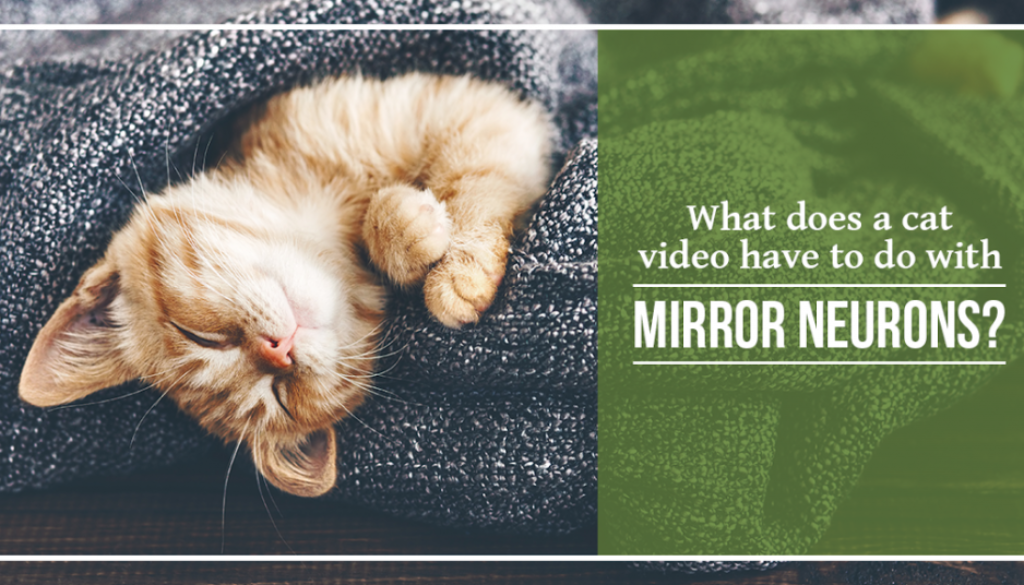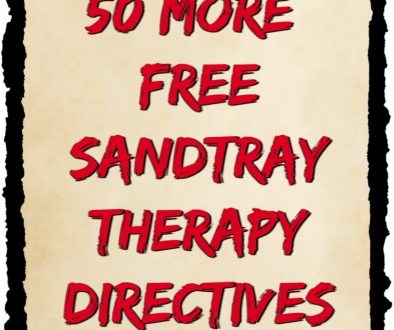Cute Cat Video + Mirror Neurons and Sandtray Therapy
I\’m a sucker for cute cat videos…
…and this one really is hilarious..
Just watch…
BUT- you may be asking yourself- what does this have to do with mirror neurons and even sandtray therapy??
The connection between the cat video and sandtray therapy may not seem obvious at first but oh yes, it\’s there.
You see, this cat grew up around show horses and the only thing that was reflected back to it from other animals was behaviors that were, well, show-horse like (such as the walking).
Now we know, through the power of mirror neurons, that everything about how we think and act is developed by what is reflected back to us.
Throughout your lifetime, what you saw and then was reflected back to you literally developed the structure of your brain and how you view the world.
Mirror neurons allow us to see others and imagine doing it ourselves.
They allow us to develop a sense of self and our way of being from what is reflected back from others in our environment.
If what is reflected back to me is that I\’m safe, good, and my actions have an expected consequence, then I develop the view of myself as stable and able to make changes within the world.
BUT- if what is reflected back to me is that I\’m not safe, other people are scary and will hurt you and my actions have no predictable outcome or reaction, then I develop the view of myself as not-stable, bad, and unable to have any power to make changes within my life.
Of course, the problem occurs though when what is reflected back, through words or literal actions (such as with the cat), don\’t match reality.
Take a small child- if his surroundings and environment teach him the world is not safe place, and every time he acts in a certain way, the reaction from others and what is reflected back is different. When this happens over and over, he develops a deep-rooted view that his inner and outer world is chaotic and unsafe.
Through the mechanics of mirror neurons and implicit memories, he learns this to be the literal truth or the way things are. It\’s not a choice like, \”Oh, I know people can be bad,\” it\’s a way of being in the world. Even as a man, he now carries around this view of the world that others are scary and it\’s survival of the fittest.
There\’s no talking a person out of this-the centers for attachment and safety are WAY below the level of conscious awareness.
So, how do we access and change this important but hard-to-get-to areas of the brain through therapy??? And yes, it can be done- even up into adulthood.
Step in: Sandtray therapy.
Because sandtray therapy works in the non-verbal parts of the brain, using images and tactical information to create change, we are meeting the client where he is- in the lower parts of the brain where the original wounding was (and is) taking place.
If we only ask in words why he is yelling at his boss, he will likely give you a reason having to do something with an external factor or may even reply \”I don\’t know.\”
But, through the power of sandtray therapy, we can not only provide our clients with a new kind of unconditional positive relationship- or the neuroception of safety (Porges)- but we can help the brain actually change by working with the underlying pieces in the lower, non-verbal parts of the brain that are actually running the show.
Since our wounding often takes place and then is moved into the non-verbal, lower limbic parts of our brain, we need a tool to access what is only images.
When we provide ready images in the form of sandtray miniatures and a safe relationship, our client\’s brain will be able to identify with images, through the sandtray, what has previously been too painful to call into consciousness with mere words.
And, once we are able to move what was once below the level of awareness into our stream of consciousness, THEN we have the ability to make changes with our clients.
So, to summarize:
Mirror neurons = Our view of the world (below the level of consciousness awareness)
Our view of the world = Our actions and way of being
Our way of being = Behaviors that are often recreating the our own nightmare
Behaviors that recreate our own nightmare = You end up in counseling
You end up in counseling = Need a way to work with those things that are preverbal or below the level of consciousness
Need a way to work with preverbal or nonverbal pain = Sandtray therapy
Sandtray therapy = Real and lasting change in the brain with outer, ripple effects in every area of life.
And yep, we got all that from a cute cat video:)




November 4, 2016 @ 3:00 pm
I really like this explanation and I love that it came from a cat video! It is amazing the things that inspire us.